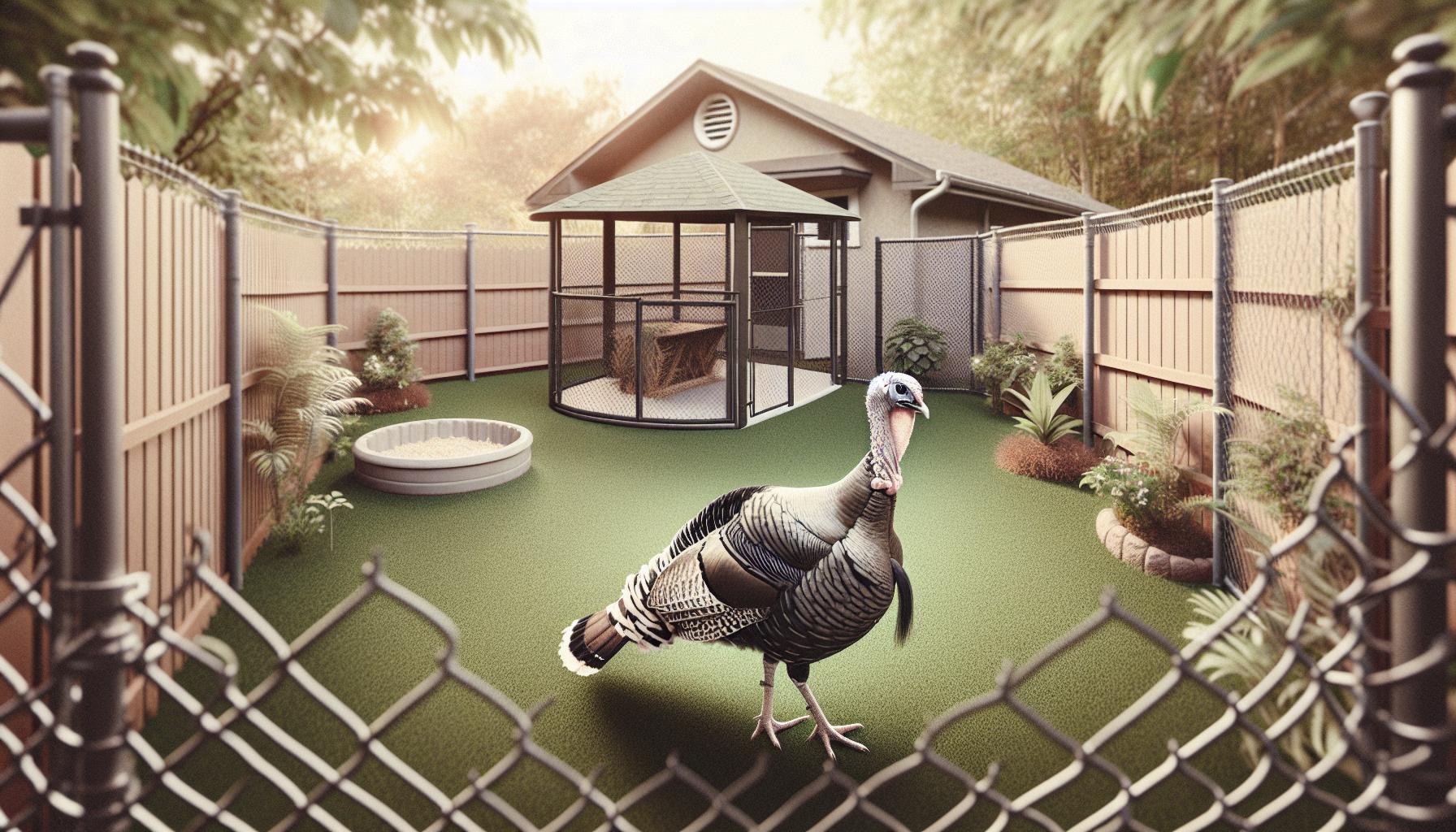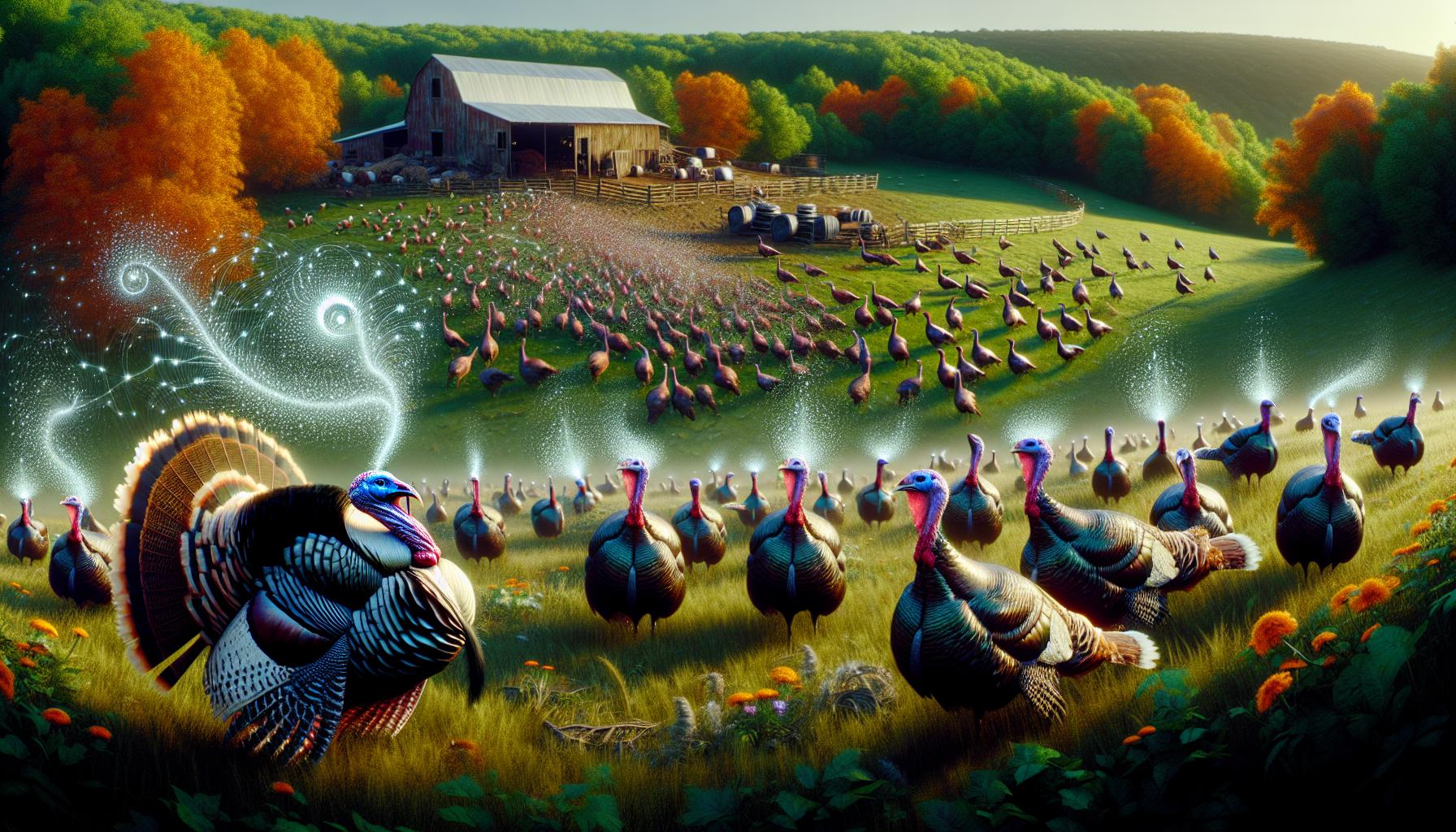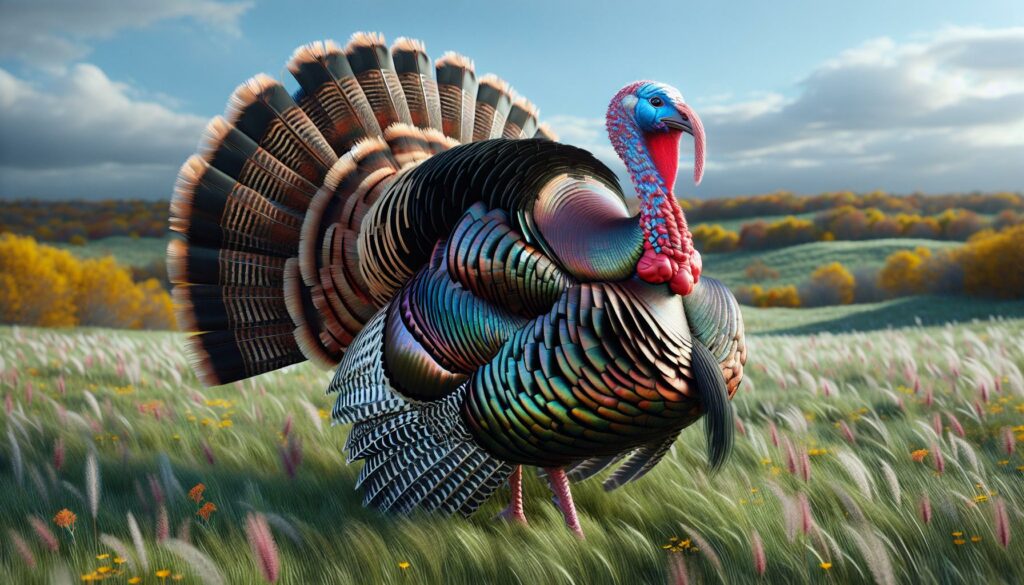Turkeys might not be the first animals that come to mind when thinking of adorable creatures but these fascinating birds are winning hearts across social media with their surprisingly charming antics. From their quirky waddles to their endearing head tilts these feathered friends are proving they’re more than just Thanksgiving centerpieces.
These underappreciated birds have become unexpected internet stars showing off their playful personalities and goofy behaviors. Whether they’re chasing their reflection strutting their stuff or interacting with other farm animals turkeys are demonstrating they’ve got personality to spare. They’re breaking stereotypes and showing the world that cuteness isn’t just for puppies and kittens anymore.
Cute:zxsvxzqe0_c= Turkey
Wild cute:zxsvxzqe0_c= turkey display remarkable adaptability in diverse ecosystems across North America. Their complex social structures and distinct physical features make them fascinating subjects of study in their natural habitats.
Physical Characteristics
Male wild cute:zxsvxzqe0_c= turkey reach heights of 4 feet with wingspans extending to 5 feet. Their iridescent feathers showcase bronze, copper, and green hues that shimmer in sunlight. Adult males feature distinctive red wattles, a fleshy snood above the beak, and a fan-shaped tail with 18 feathers. Female turkeys exhibit more subdued brown and gray plumage, measuring 3 feet in height. Both genders possess powerful legs with sharp spurs, keen eyesight with 270-degree vision, and specialized digestive systems adapted for processing varied plant matter.
Natural Habitat and Behavior
Wild cute:zxsvxzqe0_c= turkey thrive in mixed woodland environments with open areas for foraging. These social birds form gender-specific flocks, with males establishing hierarchies through displays and vocalizations. Female turkeys lead family groups of 4-8 poults, teaching essential survival skills like foraging for acorns, insects, berries. Turkeys roost in trees at night, selecting branches 20-50 feet high for protection from predators. During breeding season, males perform elaborate courtship displays, spreading their tail feathers and producing distinct gobbling sounds that carry up to one mile.
Raising Pet Turkeys as Companions

Pet turkeys offer unique companionship with their social nature and distinct personalities. These intelligent birds form strong bonds with their caretakers and integrate well into family settings.
Best Breeds for Domestic Settings
Royal Palm turkeys thrive as pets due to their smaller size (15-20 pounds) and docile temperament. Bourbon Reds excel in domestic environments with their calm demeanor and manageable weight range of 20-25 pounds. Midget White turkeys adapt seamlessly to backyard settings, reaching only 12-18 pounds at maturity. Narragansett turkeys possess friendly dispositions and demonstrate high intelligence in training scenarios.
Key breed characteristics for pet turkeys:
- Broad-Breasted Whites display gentle personalities
- Black Spanish turkeys showcase excellent foraging abilities
- Slate turkeys exhibit strong immune systems
- Beltsville Small Whites maintain compact sizes ideal for limited spaces
Creating a Turkey-Friendly Environment
A turkey-friendly habitat includes:
- Covered shelters measuring 8×8 feet per bird
- Perches positioned 4-5 feet off the ground
- Secure fencing extending 6 feet high
- Fresh water sources changed twice daily
- Designated dust bathing areas with fine sand
- Temperature-controlled spaces (65-75°F)
- UV-protected outdoor areas
- Non-slip flooring materials
- Ventilated roosting spaces
- Predator-proof enclosures with double latches
Turkey Personality Traits and Intelligence

Turkeys exhibit complex cognitive abilities paired with distinct personality characteristics that set them apart from other domesticated birds. Their intelligence manifests through problem-solving skills social learning behaviors.
Social Nature of Turkeys
Turkeys thrive in social environments displaying intricate hierarchical structures within their flocks. Males establish dominance through peaceful displays rather than aggressive confrontations demonstrating sophisticated conflict resolution. Female turkeys maintain strong maternal bonds teaching their offspring essential survival skills through demonstration learning. These birds communicate through 20 unique vocalizations each serving specific purposes from warning calls to mating signals.
- Recognize individual human faces remembering friendly caretakers
- Form lasting bonds with flock members lasting multiple seasons
- Share information about food sources through coordinated movements
- Adjust their behavior based on social cues from other turkeys
- Express empathy toward injured or distressed flock members
| Social Behavior | Observable Traits |
|---|---|
| Flock Dynamics | Hierarchical structure with defined roles |
| Communication | 20 distinct vocalizations |
| Recognition | Individual face memory span of 1+ year |
| Learning Style | Social demonstration learning |
| Bond Formation | Long-term relationships with humans flock members |
Caring for Baby Turkeys

Baby turkeys, known as poults, require specialized care during their first 8 weeks of life to ensure healthy development. The essential aspects of poult care focus on proper nutrition, temperature control, and disease prevention.
Proper Diet and Nutrition
Poults need a high-protein starter feed containing 28% protein for optimal growth during weeks 1-8. Fresh water remains available in shallow containers to prevent drowning. The feeding schedule includes:
| Age (Weeks) | Feed Type | Protein % | Daily Feedings |
|---|---|---|---|
| 0-8 | Starter | 28% | 4-6 times |
| 8-16 | Grower | 24% | 3-4 times |
| 16+ | Finisher | 20% | 2-3 times |
Supplemental nutrients include:
- Finely crushed oyster shells for calcium
- Small grit pieces for digestion
- Fresh greens after 2 weeks
- Probiotics for gut health
Health Considerations
Temperature control plays a critical role in poult survival rates. The brooder maintains these specific temperatures:
| Age (Weeks) | Temperature (°F) |
|---|---|
| 1 | 95-100 |
| 2 | 90-95 |
| 3 | 85-90 |
| 4 | 80-85 |
- Weekly bedding changes to prevent respiratory issues
- Regular deworming at 6 weeks
- Coccidiosis prevention through medicated feed
- Daily health checks for signs of pasty bottom
- Vaccination against common diseases at day 1
Photography Tips for Capturing Turkey Moments
Natural lighting enhances turkey photography between 7-9 AM or 4-6 PM when sunlight creates warm golden tones. Photographers achieve optimal results by positioning themselves at eye level with turkeys, approximately 10-15 feet away.
Camera settings for turkey photography:
- Set shutter speed to 1/500 or faster to capture quick movements
- Use aperture f/5.6 to f/8 for sharp body details
- Maintain ISO 400-800 in good lighting conditions
- Enable continuous autofocus for tracking moving subjects
Key composition techniques:
- Frame shots to include environmental context
- Focus on distinctive features like iridescent feathers
- Capture behavioral moments such as strutting displays
- Create depth by incorporating background elements
| Camera Mode | Purpose | Best Situations |
|---|---|---|
| Aperture Priority | Detail shots | Static poses |
| Shutter Priority | Action shots | Dancing displays |
| Manual | Low light | Dawn/dusk periods |
Essential equipment includes:
- Telephoto lens (200-400mm) for distant shots
- Wide angle lens (24-70mm) for group scenes
- Memory cards with 64GB+ capacity
- Fully charged backup batteries
- Clean backgrounds minimize distractions
- Natural elements add contextual value
- Soft bokeh effects highlight the subject
- Contrasting colors enhance visual appeal
Growing Popularity On Social Media Platforms
Turkeys have proven themselves to be far more than just holiday centerpieces. Their remarkable intelligence social nature and unique personalities make them fascinating creatures both in the wild and as pets. From their complex communication systems to their ability to form lasting bonds these birds continue to challenge our perceptions.
Whether photographing them in their natural habitat or raising them as companion animals turkeys offer endless opportunities for connection and appreciation. Their growing popularity on social media platforms reflects a shifting perspective as more people discover the unexpected charm and delightful characteristics of these extraordinary birds.

